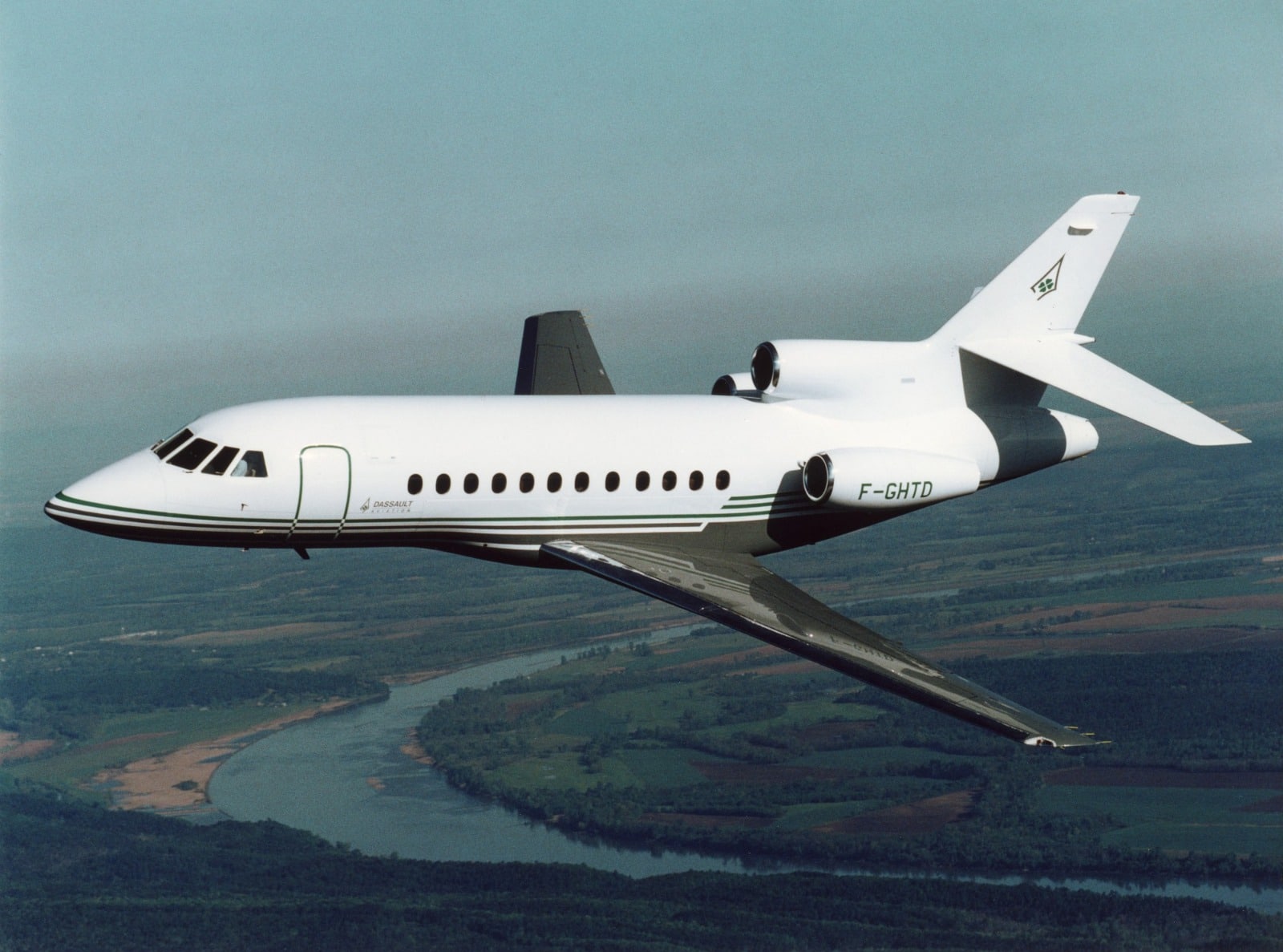Introduction
Since its debut in the mid-1980s, the Dassault Falcon 900 has held a unique place in the world of business aviation. Known for its trijet configuration, intercontinental range, and ability to operate in challenging environments, the Falcon 900 has become a symbol of versatility and prestige. Even decades after its first flight, it remains one of the most recognized and respected aircraft in its class.
Origins and Development
The Falcon 900 was developed as an evolution of Dassault’s earlier Falcon 50, itself a descendant of the Mystère-Falcon series. Dassault wanted to create a larger, more capable jet with longer legs, improved aerodynamics, and greater passenger comfort. The aircraft was first announced in 1983, took to the skies for its maiden flight in 1984, and entered service in 1986. From the outset, it set new benchmarks in performance and safety for business jets of its era.
Design Features
One of the Falcon 900’s most distinctive characteristics is its three-engine layout. With two engines mounted on the sides and a third integrated into the tail via an S-duct, the trijet design provides both redundancy and superior performance in hot-and-high conditions. This configuration also allows the aircraft to operate from shorter runways and airports at higher elevations—capabilities that many twin-engine competitors struggle to match.
The airframe incorporates a mix of advanced materials and aerodynamic refinements, giving it excellent efficiency for its size. Inside, the Falcon 900 features a spacious, comfortable cabin that can typically seat between 12 and 14 passengers. Its interior can be customized to a variety of layouts, making it equally suitable for corporate travel, private ownership, or government VIP missions.
Evolution and Variants
Dassault has continuously improved the Falcon 900 platform, creating several variants over the decades. The original 900 was followed by the 900B with upgraded engines, the 900EX with increased range and advanced avionics, and eventually the 900LX, which features blended winglets and the modern EASy cockpit system. Each new version has brought enhancements in range, fuel efficiency, and onboard technology, keeping the aircraft competitive even as newer designs have entered the market.
Performance and Capabilities
The Falcon 900 series is designed to cross oceans with ease. Depending on the variant, it can fly intercontinental legs such as New York to Moscow or London to Tokyo with only one stop. The aircraft is certified to fly at altitudes up to 51,000 feet and can cruise near Mach 0.87, placing it firmly in the top tier of long-range business jets.
Beyond raw performance, the Falcon 900 excels in operational flexibility. Its ability to land on relatively short runways makes it a favorite among travelers who need access to airports closer to final destinations, including those in remote or high-altitude regions.
Strengths and Considerations
Owners and operators praise the Falcon 900 for its versatility, safety, and cabin comfort. The trijet design provides peace of mind on long overwater flights and offers performance margins that enhance safety in demanding environments. The aircraft’s cabin is also known for being quiet and adaptable, with a wide range of interior configurations.
On the other hand, three engines mean greater maintenance complexity compared to a twinjet, which can translate to higher operating costs. However, for many operators, the additional capabilities more than offset these expenses, especially when missions demand performance beyond what a typical twinjet can provide.
A Global Presence
The Falcon 900 has found a home not only with corporations and private owners but also with government and military operators. It has been adapted for specialized missions such as maritime patrol and VIP transport, proving its durability and adaptability. Its reputation for reliability has kept it in service across the globe, from major financial centers to remote regions.
Conclusion
The Dassault Falcon 900 is much more than a business jet—it is a versatile tool that blends performance, safety, and comfort in a way few aircraft can match. Over the years, its continuous evolution has allowed it to remain competitive, and it still commands respect in the skies today. For operators who need intercontinental range, access to challenging airports, and a spacious, comfortable cabin, the Falcon 900 remains a compelling choice.





